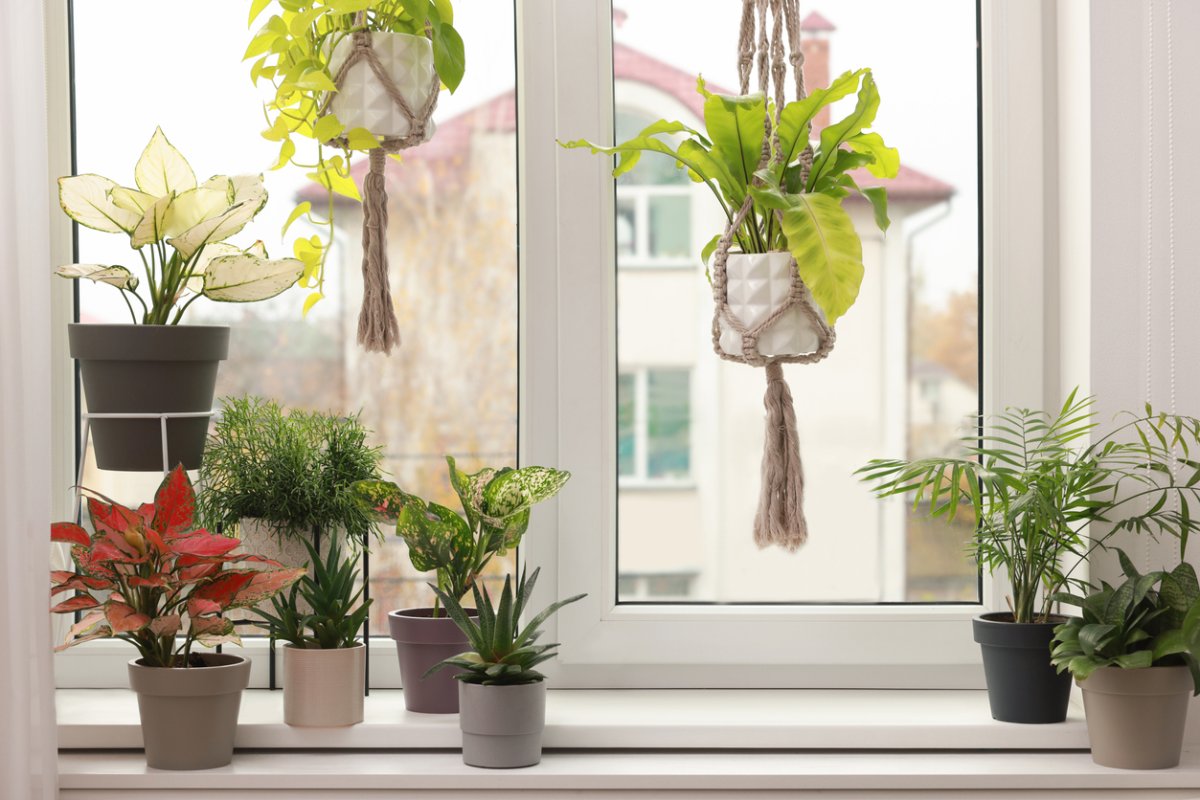

We may earn revenue from the products available on this page and participate in affiliate programs. Learn More ›
Most people choose to decorate their windows with traditional curtains, blinds, or fabric valances. But finding the perfect covering—one that blocks the sun, provides some privacy, and matches your decor—isn’t as easy as it should be. Learning how to dress a window without curtains can save money, upcycle items you may already have at home, and inject tons of personality into your personal space.
1. Corrugated Metal Awning
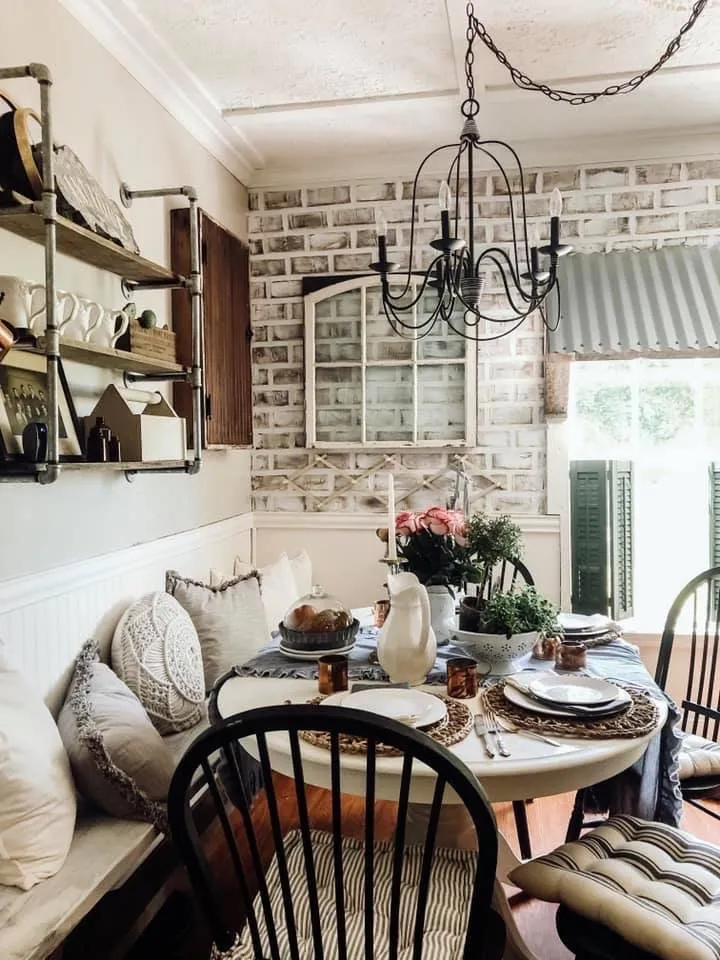
Indoor awnings are unexpected and a bit over the top, but that’s why we like them. Blogger Hayden Scharrer at Two Paws Farmhouse fashioned these corrugated metal window awnings from plans by fellow blogger Shanty 2 Chic. Hayden used scrap lumber and spent just $12 on the corrugated metal, but the effect on her breakfast nook is priceless. Though this awning looks perfect with farmhouse decor, we can also see it working with more modern furnishings if you spray painted the awning to complement your decor.
RELATED: 10 Smart and Easy Ways to Decorate With Corrugated Metal
2. Stenciled Sign
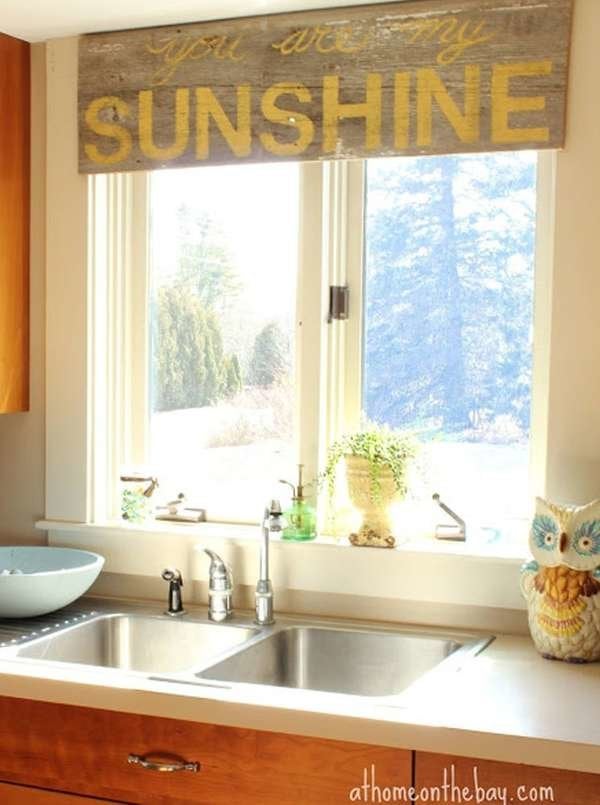
Instead of topping her kitchen window with a traditional valance, Mary from At Home on the Bay used a salvaged wood board with a stenciled design, created by Lemonade Makin’ Mama. The rustic valance lets light flood the room but doesn’t look too sparse. Plus, the cheery message and bright colors could provide much-needed encouragement to tackle those dirty dishes!
3. Privacy Screen
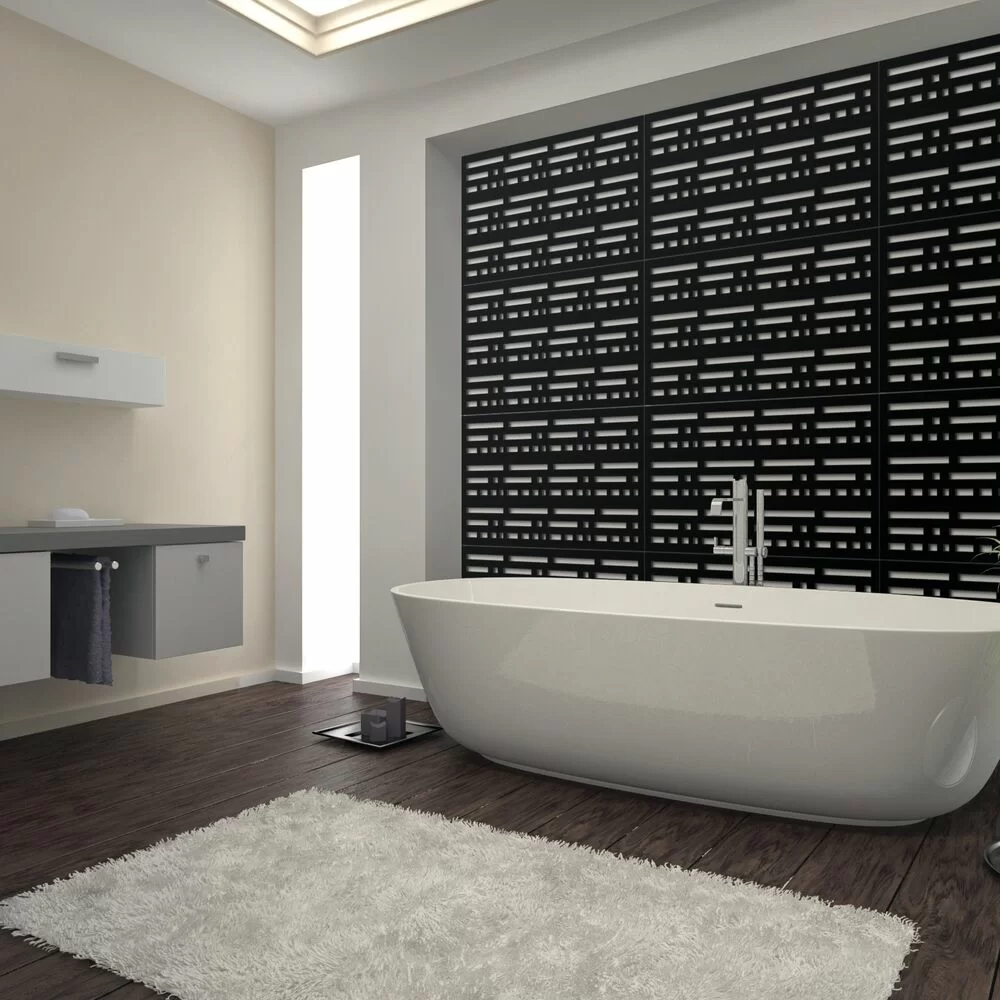
To dress a large window, consider skipping curtains or blinds altogether and instead position a room divider or privacy screen in front of the panes. The Morse decorative screen from Barrette Outdoor Living is made of heavy-duty polypropylene and is sold in 2-foot by 4-foot sections, which makes it easy to customize the screen to fit just about any size window. If this style doesn’t suit, making your own DIY privacy screen out of pine boards, thin sheets of metal, or shiplap is another way to go.
RELATED: The 16 Best Places to Buy Curtains
4. Frosted Glass

Frosted glass provides exceptional privacy, but it completely blocks the view of the outdoors. With some low-tack tape and frosted glass spray paint, however, you can create a custom pattern that shields your home a bit from prying eyes but still lets in light. Plus, a frosted design doubles as a decorative element, as demonstrated by this playful geometric pattern.
5. Faux Stained Glass
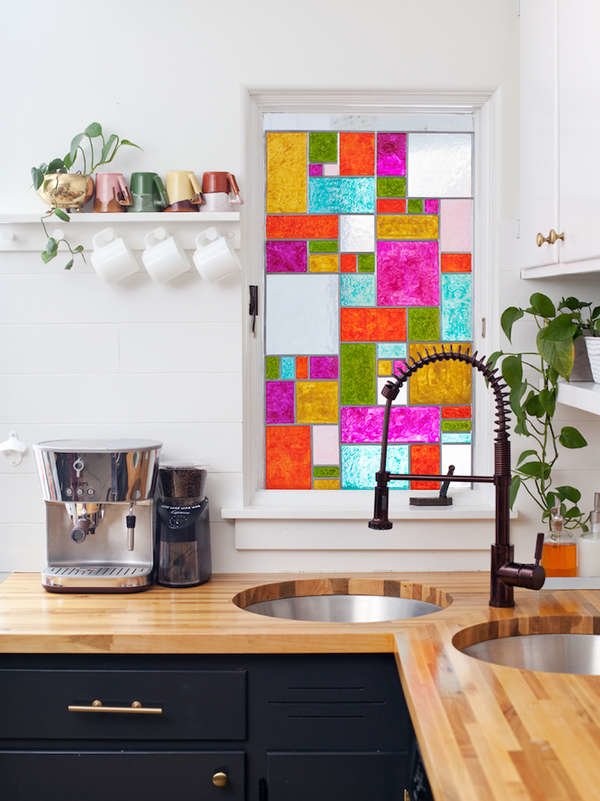
Stained glass adds a pop of color to any room, and it filters light in a lovely, unique way when used as a window treatment. Take a cue from the bloggers behind A Beautiful Mess and create your own custom stained-glass panel. The project requires just a piece of glass, some lead adhesive strips, and glass paint—all available at your local craft store.
6. Barn Door Shutters
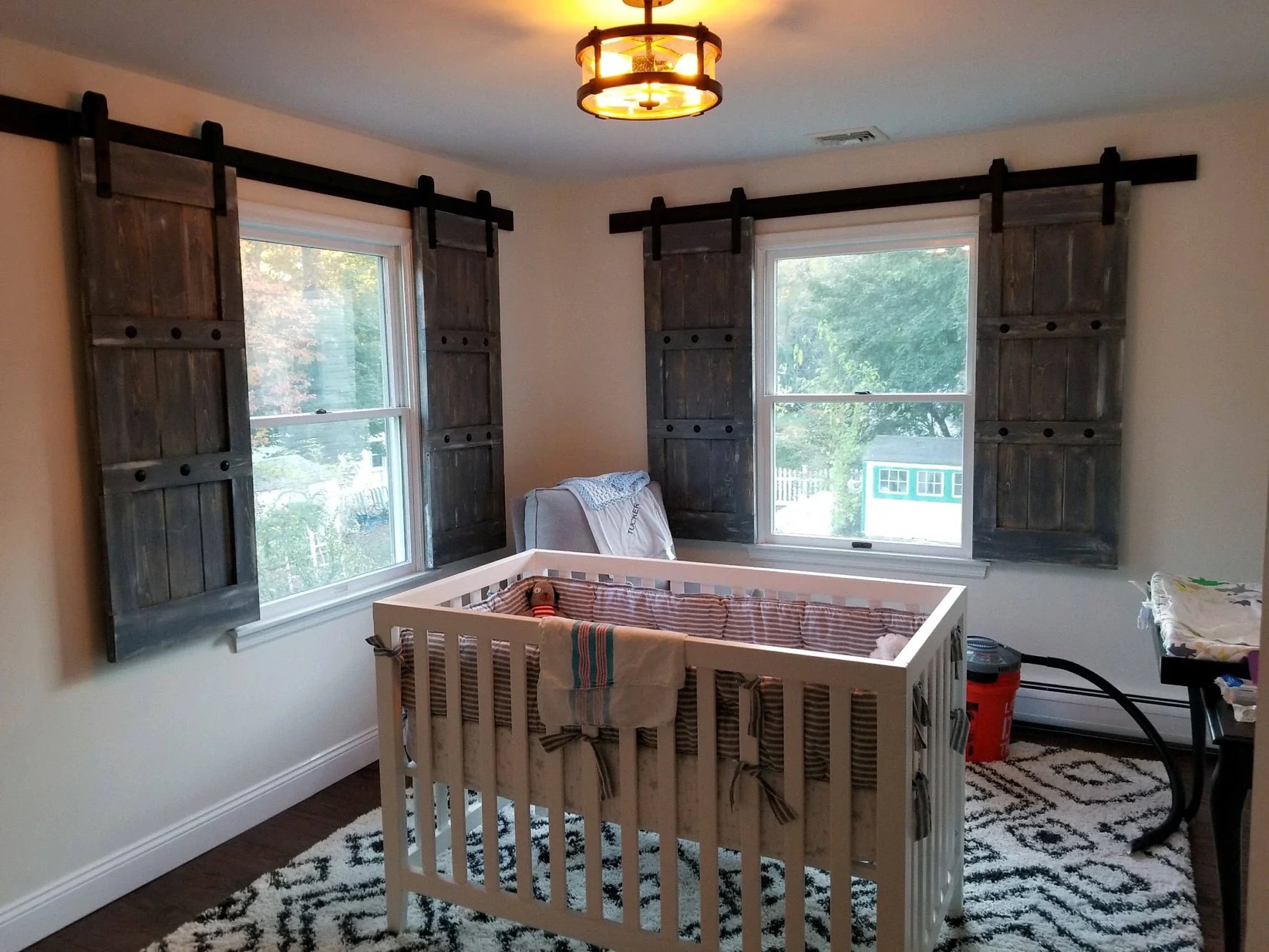
For homeowners who are still riding the modern farmhouse train, barn door shutters are a no-brainer. Install the track above the window, and slide the doors open and shut. When closed, the shutters prevent anyone (and very little light) from peeking in. When open, the doors frame your windows in a rustic touch.
RELATED: The Best Barn Doors You Can Get
7. Vintage-Style Shutters
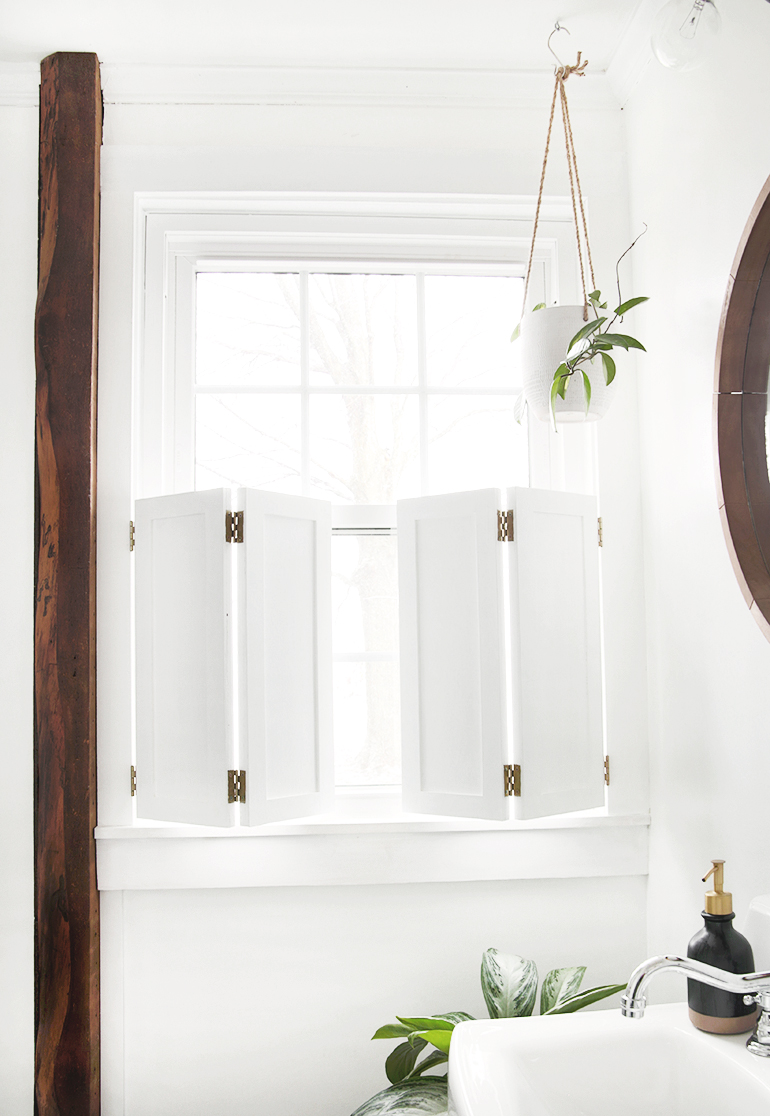
Although these shutters by The Merrythought look like timeworn antiques, they are actually DIY window treatments that were constructed from plywood, wood glue, and a few other basic materials. This piece can be customized to fit any window. For a truly rustic look, finish the shutters with distressed paint and black hardware.
8. Clear Window Shelves

Some windows—such as the tiny ones often set above a kitchen sink—don’t require full coverage. For these windows, consider installing a set of glass or acrylic shelves instead of curtains. Filling these shelves provides you with some privacy while simultaneously showcasing decorative accessories, a collection of herbs, or whatever else strikes your fancy.
RELATED: The Best Herbs to Grow Indoors
9. Lace Window Screens
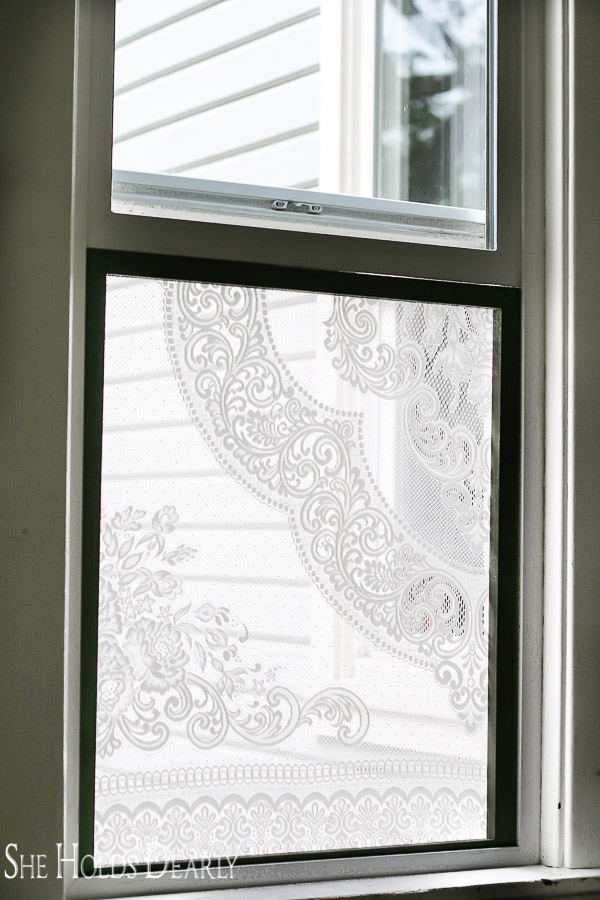
This genius window treatment is an inexpensive, easy DIY project that makes a big impact. Sarah from She Holds Dearly built window screen frames out of pine 1x2s, painted them, and stapled lace to the back of the frame. Once in the window frame, the screen allows for both privacy and natural light
10. DIY Rolled Valance
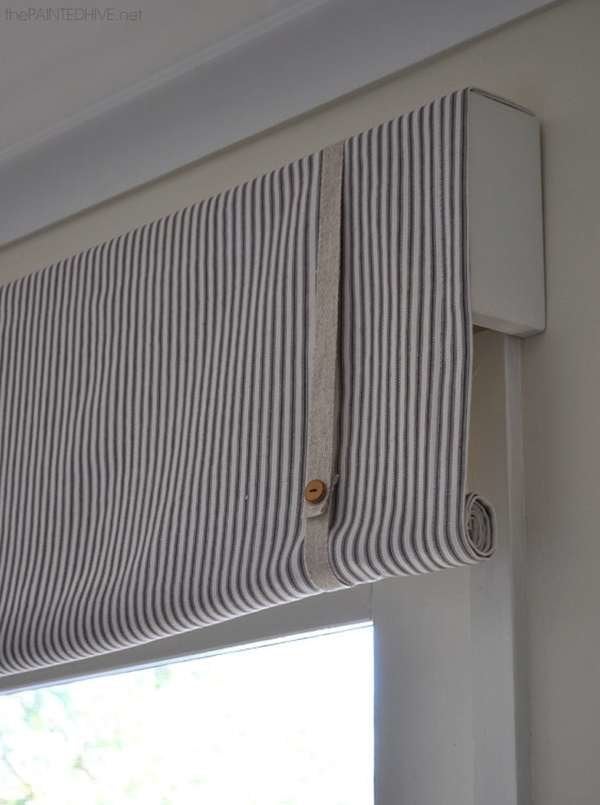
Sometimes the best option for enhancing privacy and darkness in a room (and a great alternative to blinds) is a simple roller shade. This rolled valance, which hides a practical roller shade underneath, was made by Kristine at The Painted Hive with lumber, fabric, natural linen ribbon, and rustic buttons. The window treatment easily comes together with hemming tape for a quick, no-sew alternative.
RELATED: Tested: The Best Blackout Curtains
11. Faux Leaded Glass
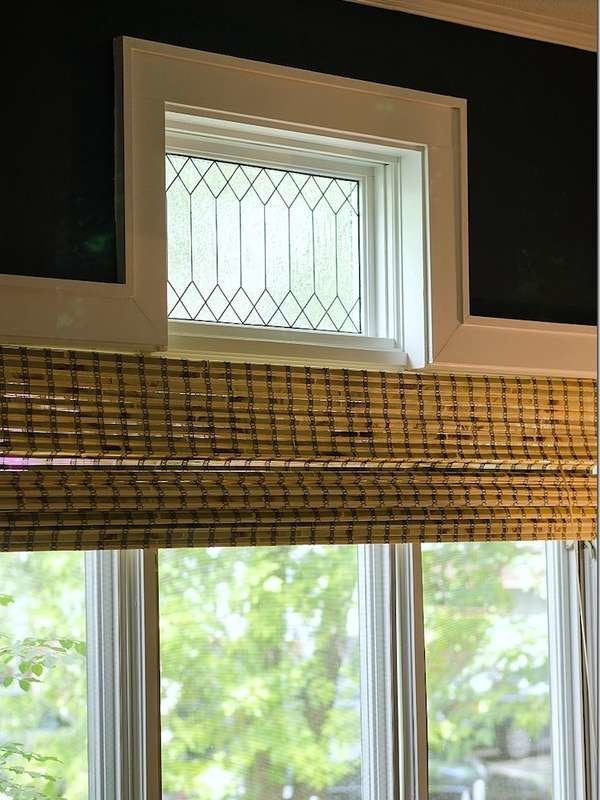
Paint a bit of privacy onto your windows by recreating this faux leaded glass at home with the help of the tutorial at It All Started With Paint. Leading strips and gallery glass paint in clear and black are applied to the window pane, resulting in a permanent window covering fit for a historic home.
12. Hanging Garden

Brighten up a plain kitchen window blind by using it as a backdrop for an indoor garden that doubles as a beautiful yet practical window treatment. You can opt to display greenery in a variety of textures as pictured here, or put flowers in the pots instead to give the window a burst of color.
RELATED: The Best Planters
13. Rag Curtains
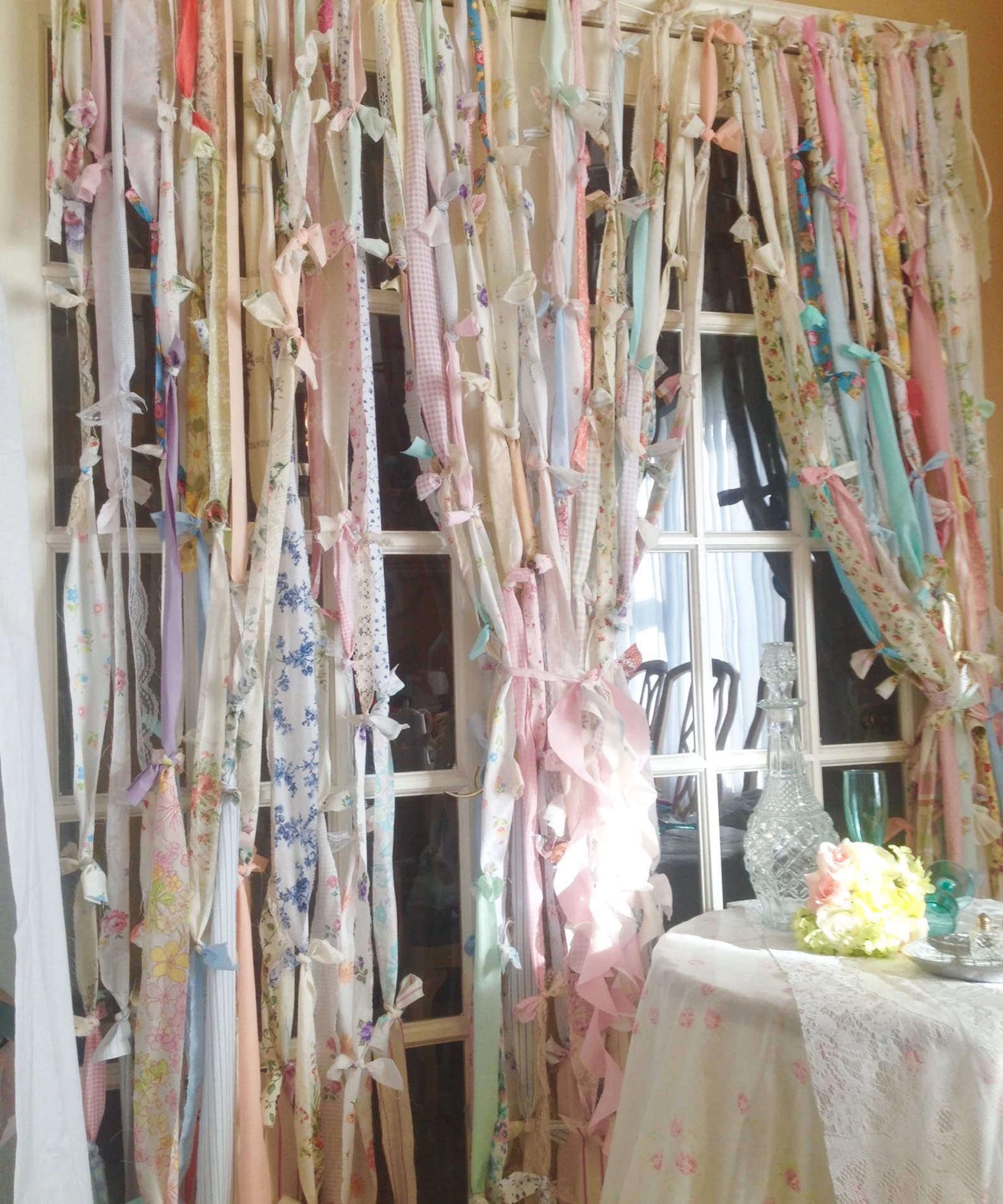
For a light and boho-chic window treatment, knot a selection of ribbons or rags over a cord or dowel to form a garland. The color, pattern, and length are completely customizable. Crafty DIYers can upcycle old tablecloths, sheets, blankets, and clothing to create a one-of-a-kind design statement.
14. Wood Vertical Blinds
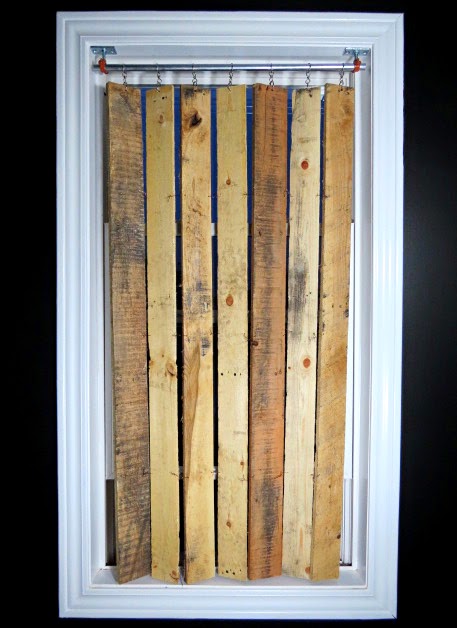
We love window covering ideas that involve upcycling: An old, heat-treated shipping pallet can be made useful indoors when taken apart and fashioned into unique window blinds. Attach the pallet boards to curtain rings after drilling holes in the boards. Slide the slats closed at night and back open during the day. For the full tutorial, visit Flipping the Flip.
15. Feed Sack Curtains

Vintage feed sacks serve as the perfect café curtains in this modern country kitchen. Anita from Whispering Pines Homestead hemmed the sacks, then strung them across a wire with rings. The finished curtain lends homey charm to the room.
RELATED: 12 Rustic Kitchen Ideas That Bring Your Space Back to Basics
16. Macrame Display
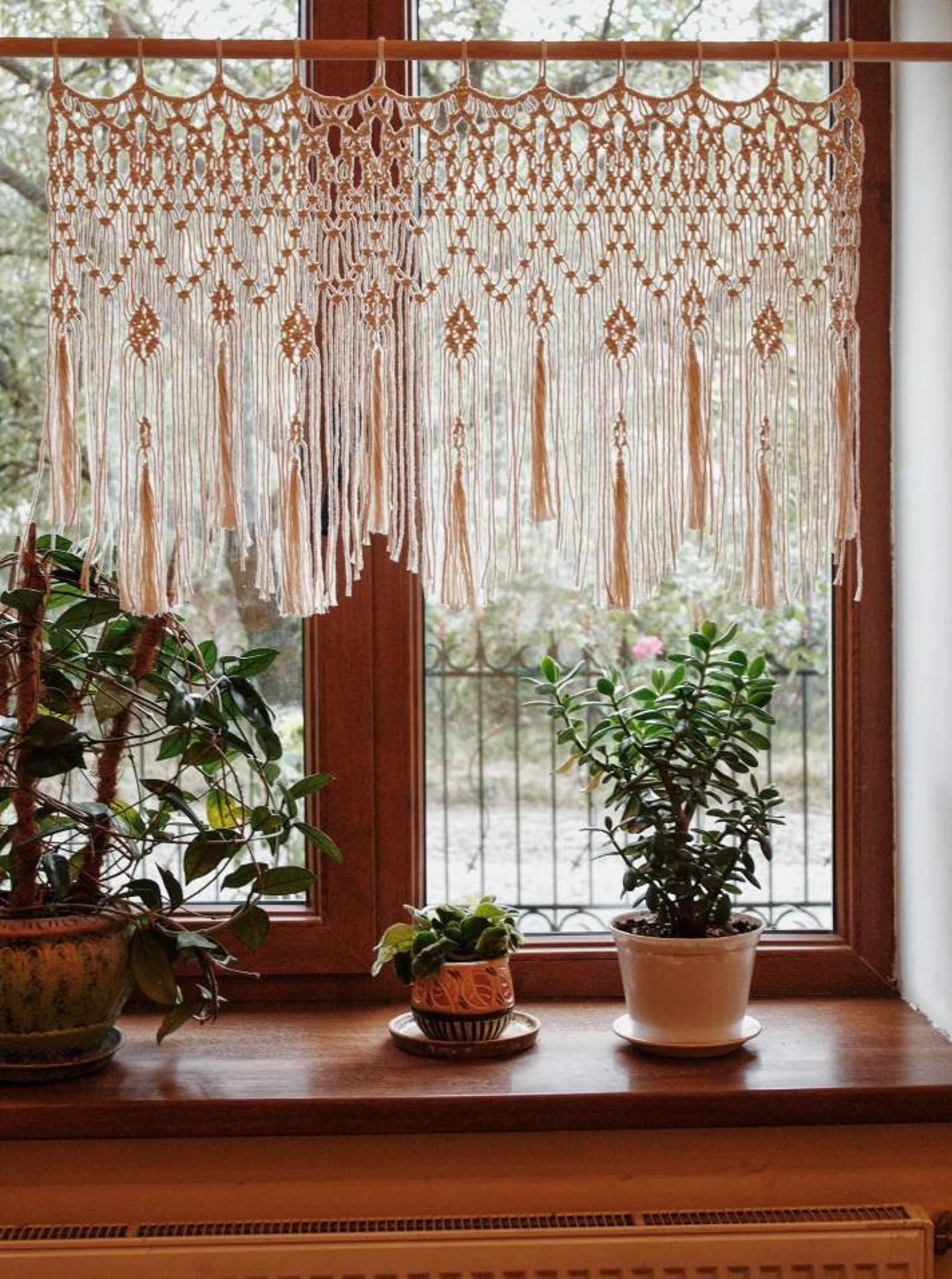
When your taste in window coverings is not conventional, knots may be your best friend. This macrame window dressing is from Ukraine-based Etsy seller Maslowa Art Shop, but if you’re at all crafty, you can make your own out of nylon cord, jute, or rope. Little Vintage Cottage has a tutorial for making a cute but simple kitchen curtain that you can knot in short order.
17. Twinkling String Lights
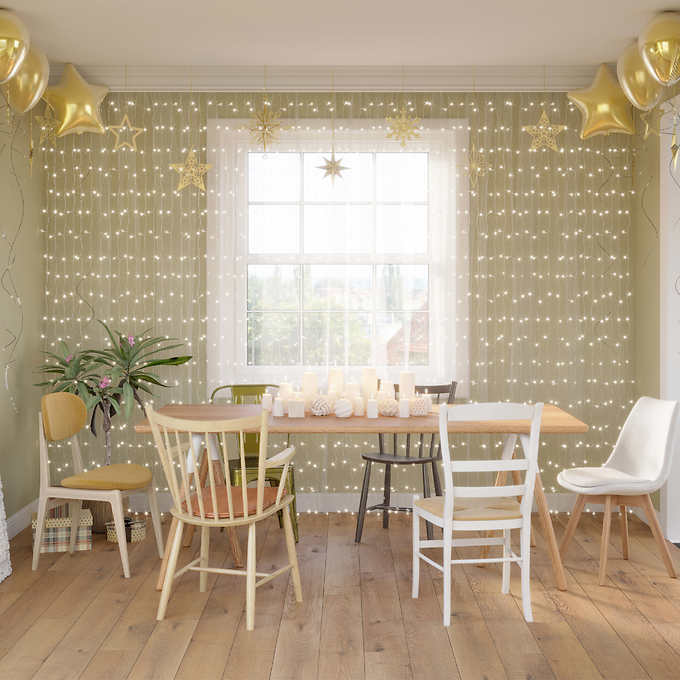
Is there anywhere in the home string lights don’t look good? We can and do put them everywhere, windows included. Whether you’re having friends over for a party or binging Netflix solo, string light curtains like these make any space feel festive, if not particularly obscured from the outside world. (If the room you’ll hang the curtains in has a street view, you can always hang plain white shades behind the twinkles.)
